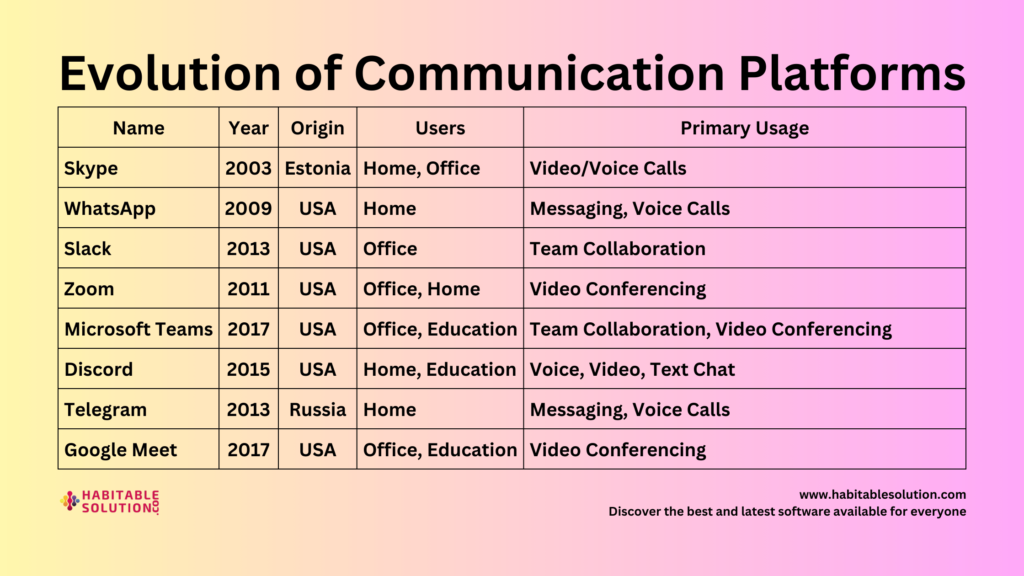“Infosec is 70 % patches, 30 % people—and the people part is harder.” That punch‑line from the viral talk “The 5 Most ANNOYING People in Cybersecurity!” got laughs because everyone in the field has met at least one of these archetypes. This 1,350‑word essay unpacks each personality, explains why they grate on teams, and—crucially—shows how to turn irritation into improvement. If you’re a CISO guiding culture or a junior analyst dodging Slack rants, bookmark this guide.
1. The Eternal Gatekeeper

Signature move: Begins every sentence with “Back in my day…” and demands you memorize Nmap command flags from 2004 before touching Burp Suite. Gatekeepers believe hardship is a rite of passage: if they learned buffer overflows via hex editors, so should you.
Why they’re annoying: They stall innovation. When junior staff propose a new cloud‑native scanner, Gatekeepers scoff—then file Jira bugs about scan delays.
Survival tactic: Ask for outcomes, not nostalgia. “Which finding did the legacy tool surface last quarter that new scans miss?” Frame change as risk reduction: faster scans = smaller attack surface.
Flip it: Gatekeepers hold tribal knowledge. Pair them with interns in brown‑bag reverse‑engineering sessions. Pride morphs into mentorship.
2. The Buzzword Bingo Champion

Signature move: Every meeting, they drop “quantum‑resistant,” “zero‑trust,” and “AI‑XDR” without context. Slides resemble vendor booths; ROI hides behind acronyms.
Why they’re annoying: Decision fatigue. Teams chase shiny objects while patch backlogs grow. Gartner hype replaces grounded metrics.
Survival tactic: Respond with a three‑part test—definition, integration, measurement. “Define AI‑XDR in one sentence, explain how it integrates with our SIEM, and show the metric it improves.” Most buzzwords wilt under scrutiny.
Flip it: Assign Champions to tech radar. Quarterly, they map new buzzwords on an adopt‑assess‑hold grid. Their FOMO turns into structured foresight.
3. The Compliance Crusader

Signature move: Waves audit reports like holy scripture. “We passed SOC 2, so we’re secure.” Policies matter more than packet captures.
Why they’re annoying: They conflate checkbox compliance with real‑world resilience. Attackers don’t read ISO clauses.
Survival tactic: Translate gaps into compliance language. “Patch latency violates clause A.12.6.1.” Crusaders respect standards; show how operational risk erodes certification.
Flip it: Recruit them for control mapping. They excel at documentation—pair with purple teams to log detection coverage vs policy.
4. The Doom Prophet

Signature move: Forecasts catastrophic breaches daily. Any new CVE? “We’re doomed.” Slack alerts drip with 🔥 emojis.
Why they’re annoying: Paralysis. Constant panic erodes morale and desensitizes leadership to genuine emergencies.
Survival tactic: Counter fear with probability. Use CVSS Environmental scores and exploit maturity ratings. Frame vulnerabilities in actuarial terms: “High severity, low exploitability—monitor; not red alert.”
Flip it: Prophets make great threat‑intel leads. Channel their vigilance into curated weekly briefings that quantify instead of catastrophize.
5. The Tool Fanboy (or Fangirl)

Signature move: New GitHub repo? Installed yesterday. They propose replacing stable pipelines monthly. Suffer FOMO of tooling.
Why they’re annoying: Context switches cripple velocity. Every migration resets automation, docs, and onboarding.
Survival tactic: Enforce a “two‑pilot rule.” Any tool change needs two successful pilots: one functional, one cost‑benefit.
Flip it: Appoint them prototype captain. In a sandbox, they vet tools against sample datasets; only proven winners graduate to prod.
Turning Annoyance into Advantage—Culture Hacks

- Role Rotation: Quarterly, switch staff between blue, red, and GRC tasks. Gatekeepers gain empathy; Crusaders taste live logs.
- Bias‑Busting Metrics: Track mean‑time‑to‑patch, alert precision, and business impact dollars saved—numbers silence Doom hyperbole.
- Internal Tech Radar: Adopt ThoughtWorks‑style radar. Fanboys funnel discoveries into structured docs, not random Slack drops.
- Mentor Credits: Award conference stipends to senior staff who publish beginner‑friendly guides. Gatekeepers transform into guides.
A culture of continuous learning reframes friction as fuel.
Case Study: From Dumpster Fire to Dream Team

FinGrid Inc. (anonymized) endured all five archetypes. On one project, Buzzword Bingo deployed an untested XDR, Tool Fanboy swapped the pipeline mid‑sprint, and Doom Prophet Slacked “nation‑state pwnage” after a false positive. Twenty developer hours evaporated.
A new CISO launched Project Harmony:
- Charter Workshops: Each archetype wrote FAQs explaining their passion (legacy, compliance, new tech, threat intel, tooling).
- Scorecard Metrics: Mean‑time‑to‑detect, patch latency, percent automated tests. All voices debated real numbers, not vibes.
- Quarterly Purple Drills: Gatekeepers ran red playbooks; Fanboys fine‑tuned detection.
Twelve months later:
- MTTD dropped from 48 h → 6 h.
- Patch latency for CVSS 9+ shrank from 21 days → 48 h.
- Staff attrition fell 30 %.
Harmony turned annoyance into an engine for improvement.
Toolbox to Tame the Five

| Need | Tool | Why It Helps |
| Unified Docs | Confluence + Draw.io | Gatekeepers document tribal CLI flags visually. |
| Radar Board | Miro Tech Radar Template | Buzzword Champions map hype vs adopt. |
| Compliance Mapping | GRC Cloud | Crusaders link CVEs to ISO clauses automatically. |
| Threat Intel Feed | Sigma + OpenCTI | Doom Prophets convert scare headlines to actionable Sigma rules. |
| Pilot Sandbox | Kubernetes Dev Cluster | Fanboys test new scanners in isolation. |
Adopt selectively; tools follow tactics, not vice versa.
SEO Snapshot
- Title Tag (57 chars): 5 Annoying Cybersecurity Archetypes & How To Handle Them
- Meta Description (152 chars): Gatekeepers, buzzword addicts, compliance crusaders—meet the 5 most annoying people in cybersecurity and learn tactical fixes in 2025.
- Primary Keyword: annoying people in cybersecurity
- Secondary: cybersecurity archetypes 2025, gatekeeper infosec, buzzword bingo security.
Call to Action: Seen these archetypes at work? Comment with your survival story—and share the fix that turned friction into force!
Closing Thoughts: From Friction to Flywheel

Every profession has its quirks, but cybersecurity’s pressure cooker—outages measured in headline minutes, CVEs weaponized within hours—magnifies personality flaws into systemic drag. Gatekeepers slow pipelines, Buzzword Champions scatter focus, Crusaders lull teams with compliance complacency, Prophets fatigue nerves, and Tool Fanboys reboot tooling before documentation prints. Left unchecked, these archetypes cost more than morale; they chip away at mean‑time‑to‑detect and enlarge breach blast radius.
Yet each “annoying” behavior hides a core strength that, when redirected, becomes a growth flywheel:
- Gatekeepers preserve hard‑won war stories—crucial for training junior red teamers on vintage protocols still alive in legacy stacks.
- Buzzword Champions read vendor blogs so you don’t have to; their curiosity fuels your tech radar.
- Compliance Crusaders master paperwork that unlocks sales in regulated markets—money that funds blue‑team headcount.
- Doom Prophets monitor threat forums at 2 a.m.; their paranoia narrows dwell time.
- Tool Fanboys find bleeding‑edge scripts that later mature into time‑saving automations.
Like kinetic friction turning into rolling momentum, channeling each trait requires two ingredients: clear metrics and psychological safety. Metrics transform subjective annoyance into objective impact; safety lets people admit bias and recalibrate without losing face.
As 2025 pushes security toward passkey adoption, AI‑powered SOCs, and software‑defined perimeters, human dynamics remain the wildcard. Invest as much in team ergonomics as in threat intel feeds, and the next time a Gatekeeper starts with “Back in my day…,” you’ll smile—because that story fuels tomorrow’s purple‑team win.
People also search for:
- What are the 5 C’s of cybersecurity?
- What are the 5 key principles of cyber security?
- Which country is best in cybersecurity?
- Personalities in cyber security
Written by Tahsin Tariq | Habitablesolution.com





